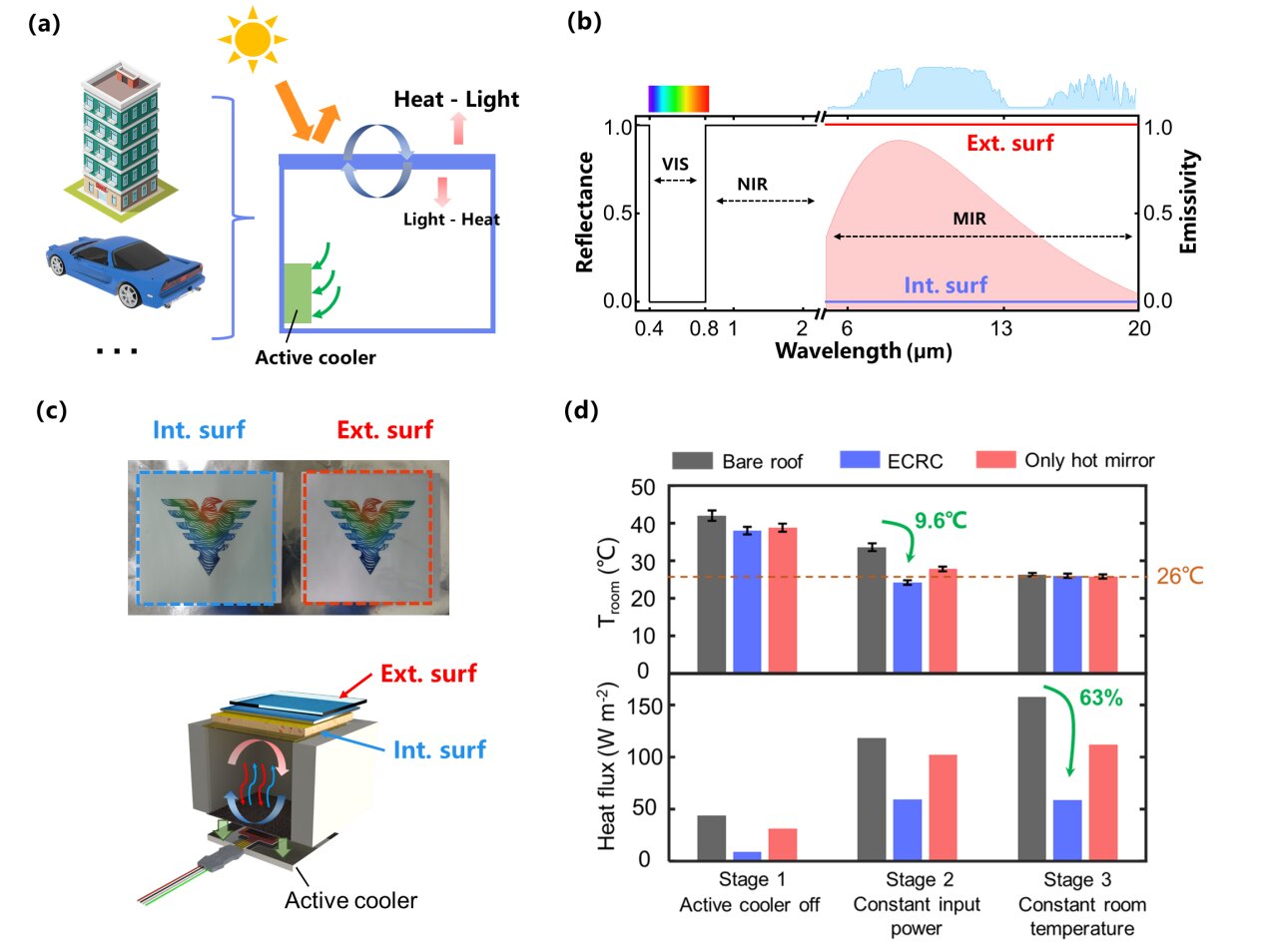#Enclosure radiative cooling for reducing air conditioning energy consumption

Table of Contents
“Enclosure radiative cooling for reducing air conditioning energy consumption”

The international consensus is that reaching carbon emission peak and subsequent carbon neutrality are to be considered the main global challenges. Research shows that building energy consumption accounts for more than 35% of total energy consumption, of which HVAC (heating, ventilation, and air conditioning) systems account for 44%. Recently, radiative cooling has been widely studied as a passive cooling method, which can efficiently reduce the target temperature by increasing the thermal emissivity and solar reflectivity of the object surface.
In a new paper published in Light Science & Application, a team of scientists, led by Professor Qiang Li from Zhejiang University and Professor Min Qiu from Westlake University, China, and co-workers have proposed a photonic-engineered thermal management strategy that incorporates an enhanced color-preserving radiative cooling (ECRC) system into existing actively temperature-regulated enclosures. Through efficient energy regulation, a power-saving of up to 63% for energy consumption is achieved.
The enhanced color-preserving radiative cooling system is designed based on a heat transfer model that involves enclosures, active coolers, and environment (atmosphere, outer space, and sun). Considering multiple factors, the authors propose that the outer surface of the building should simultaneously reflect solar energy and radiate infrared energy, while the inner surface needs to block heat radiation from entering the inner space. To combine with existing buildings, the coated films should be highly transparent.
Researchers designed and fabricated the device by using SiO2/TiO2 stack film as an exterior surface and ITO-PET film as an interior surface. Through photonic optimization, the spectral performance is further improved close to ideal. Then, a simulated enclosure is used to test the cooling performance and energy saving effect of the device. The results show that under same situations, the indoor temperature of the enclosure with the device is 9.6℃ lower than that without the device. Furthermore, when the indoor temperature is fixed at about 26℃, the energy consumption of the enclosure with the device is reduced by 63% compared with that without the device, which proves a remarkable energy-saving ability of the device.
In addition, due to the overall high transparency of the device in the visible band, almost no color difference can be detected when covering decorative surfaces with the device. Therefore, the device can be flexibly applied on existing roofs or windows without sacrificing the esthetics.
Solar cell keeps working long after sun sets
Yining Zhu et al, Color-preserving passive radiative cooling for an actively temperature-regulated enclosure, Light: Science & Applications (2022). DOI: 10.1038/s41377-022-00810-y
Citation:
Towards carbon neutralization: Enclosure radiative cooling for reducing air conditioning energy consumption (2022, May 6)
retrieved 9 May 2022
from https://techxplore.com/news/2022-05-carbon-neutralization-enclosure-radiative-cooling.html
This document is subject to copyright. Apart from any fair dealing for the purpose of private study or research, no
part may be reproduced without the written permission. The content is provided for information purposes only.
If you liked the article, do not forget to share it with your friends. Follow us on Google News too, click on the star and choose us from your favorites.
For forums sites go to Forum.BuradaBiliyorum.Com
If you want to read more Like this articles, you can visit our Science category.



